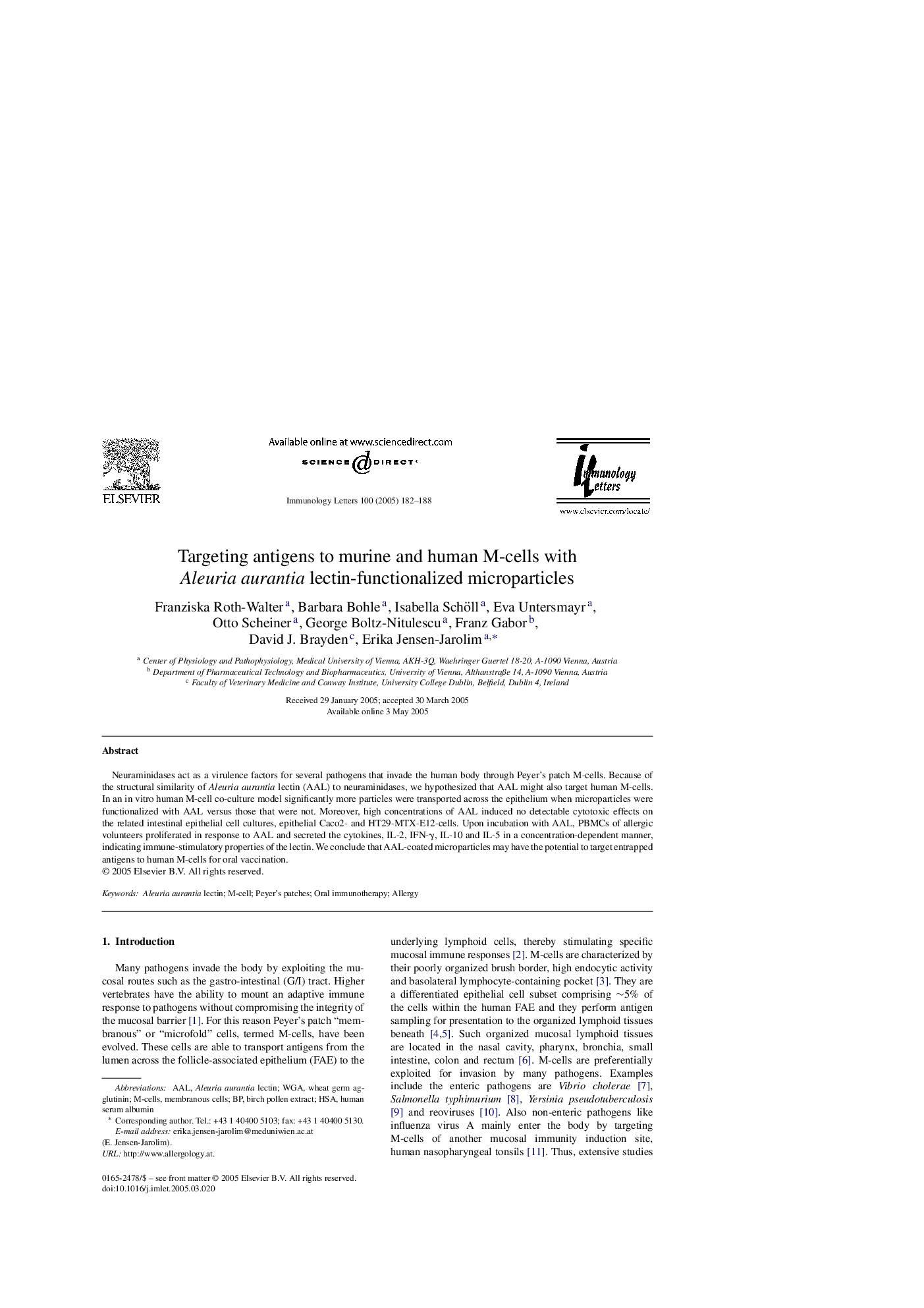| Article ID | Journal | Published Year | Pages | File Type |
|---|---|---|---|---|
| 9266215 | Immunology Letters | 2005 | 7 Pages |
Abstract
Neuraminidases act as a virulence factors for several pathogens that invade the human body through Peyer's patch M-cells. Because of the structural similarity of Aleuria aurantia lectin (AAL) to neuraminidases, we hypothesized that AAL might also target human M-cells. In an in vitro human M-cell co-culture model significantly more particles were transported across the epithelium when microparticles were functionalized with AAL versus those that were not. Moreover, high concentrations of AAL induced no detectable cytotoxic effects on the related intestinal epithelial cell cultures, epithelial Caco2- and HT29-MTX-E12-cells. Upon incubation with AAL, PBMCs of allergic volunteers proliferated in response to AAL and secreted the cytokines, IL-2, IFN-γ, IL-10 and IL-5 in a concentration-dependent manner, indicating immune-stimulatory properties of the lectin. We conclude that AAL-coated microparticles may have the potential to target entrapped antigens to human M-cells for oral vaccination.
Keywords
Related Topics
Life Sciences
Immunology and Microbiology
Immunology
Authors
Franziska Roth-Walter, Barbara Bohle, Isabella Schöll, Eva Untersmayr, Otto Scheiner, George Boltz-Nitulescu, Franz Gabor, David J. Brayden, Erika Jensen-Jarolim,
